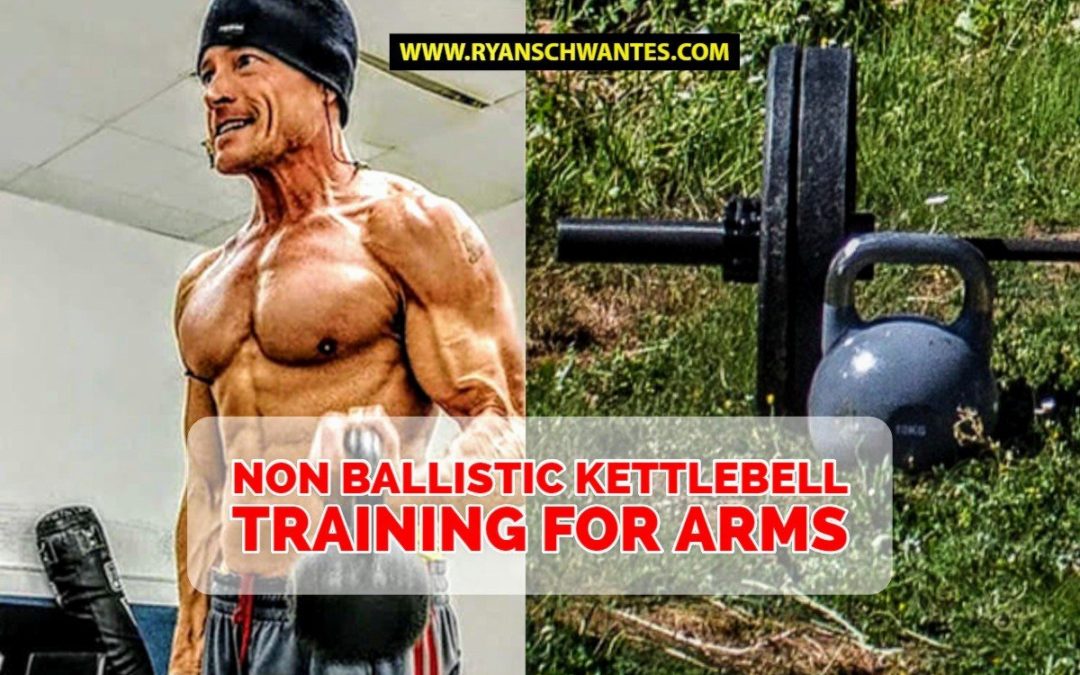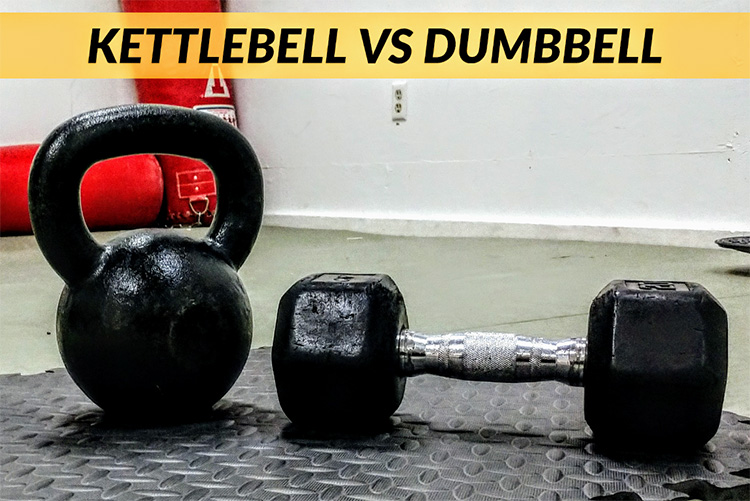When most people think of Kettlebell Training, they think of ballistic exercises because that’s primarily what kettlebells are primarily used for. (Interesting little tidbit – Ballistic comes from the Greek word ballein , which literally means “to throw”) Ballistic training is a form of power training which involves swinging weights, throwing weights, and jumping with weights to increase explosive power. Ballistic exercises are intended is to maximize the acceleration phase of an object’s movement and minimize the deceleration phase. With that in mind, Kettlebells are ideal for ballistic exercises because of the design. With that said, Kettlebells can also be used in a non-ballistic fashion as well. I personally have grown to love using kettlebell exercises in my routine and once I got the hang of using them in a non-ballistic way, I was hooked.
I’m always looking for ways to change up my workouts every 6 to 8 weeks. I have the certain splits that I like to stick to, as well as my favorite arsenal of exercises I prefer over others. Even so, it’s important to switch it up so you can maximize gains by pushing yourself to new heights, prevent overuse injuries, and of course, it can prevent you from getting bored with the same old thing over and over again in the gym. Changing it up can keep you engaged in your workouts and can help you learn to appreciate the process of building your body and pushing your body to new levels.
A few months ago, I was finishing up my arm workout and I kept thinking about how I rarely feel a good pump anymore during my routine, and I’m also rarely sore afterward. Not that soreness is a clear indicator of effectiveness, but it’s good to feel like you actually worked out on the day after you bust your ass in the gym. I started writing a new routine that night but midway, I thought, you know what, I’m gonna try something completely different than the regular biceps and triceps exercises. Sure, I could incorporate some more TRX exercises, or add a few different exercises I hadn’t done for a while, but I wanted to do something I haven’t done before. Enter in Kettlebells.
Kettlebell Training for Arms
At the same time, I was looking to change up my routine, I came across an article talking about replacing dumbbells for kettlebells in your routine. Like most people, when I think of kettlebells, I think of ballistic and explosive exercises such as the Kettlebell swing, Turkish Get-Up, Russian Twist, and the like. I never really thought of simply replacing my dumbbells with Kettlebells, and giving it a go. What I mean is using the Kettlebells in a Non-ballistic manner. Well, that’s just what I did and boy oh boy, I couldn’t be happier with the results. Now honestly, there’s a bit more to it than simply swapping out the dumbbell for a kettlebell and diving in. Kettlebells are significantly different than dumbbells in many ways and so you do need to know the best way to go about using kettlebells so you don’t hurt yourself.
I first started by replacing just triceps exercises. My normal arm routine consists of both biceps and triceps exercises in a superset manner. I’ve since switched to kettlebells for some bicep exercises (bicep exercises in general, wreak havoc on my wrists from years of boxing and kettlebells exercises can tend to put more stress on the wrists because of the balancing aspect) as well as for back exercises where I used to use dumbbells before. The key to effectively using kettlebells in place of dumbbells knowing how kettlebells can be applied to make certain movements even more effective than their traditional counterparts. There are some Fitness writers, enthusiasts, and coaches who claim if you’re using kettlebells for tricep extensions, curls, lateral raises, etc., then you’re doing it wrong. Well, that statement is a LIE. Kettlebells have benefits far beyond the explosive exercises they often are known for. The key to why Kettlebells can help with strength and size primarily has to do with the way in which the Kettlebells is designed.
Tension = Strength, Power, and Muscle
Tension is one of the most important and most overlooked aspects of strength training. Pavel Tsatsouline, who introduced kettlebells to the west in 1998, was all about tension. When asked what about the most important piece of advice people had ever learned about strength training, Pavel responded: “Stay tight” obviously referring to maintaining tension.
Most have probably heard of tension headaches or tension within your body. when you’re stressed out. In actuality, most people use the word tension as a negative connotation but when it comes to working out, tension is a great attribute and should be one of the primary goals in achieving in all exercises you do. So what the hell is tension? And what does it mean for muscles?
Well, tension is force and force is strength. If you want to be stronger, you must teach yourself to generate higher and higher levels of tension when exercising.
With kettlebells, you can decrease the training load by up to 75% and still make progress in power and strength gains. Some say using kettlebells put you at a mechanical disadvantage (which is what forces you to use less weight), it really all boils down to tension.
Tension is achieved through high-intensity muscle contractions. Greater tension development allows you to generate greater force output while allowing for more efficient control of skeletal muscle. Due to the design of kettlebells, there’s significantly more tension throughout exercises. As a result, you’ll get greater muscle fiber innervation and motor unit recruitment. Using kettlebells will provide constant tension during an exercise, which in turn, produces greater occlusion, triggering metabolic stress, cellular volumization, and overall muscle pump, all of which are key mechanisms for growth.
Non-Ballistic Kettlebell Arm Workout
The way I incorporate kettlebells into my arm workout is I choose 3 exercises for biceps, and 3 exercises for triceps and did them in a superset fashion. My workout consists of the following exercises:
|
Exercise |
Sets | Reps |
| 1a – Standing Kettlebells Bicep Curls | 4 | 4-6 |
| 1b – Decline Kettlebell Skull Crushers | 4 | 8-10 |
| 2a – Incline Kettlebell Curl | 3 | 10 |
| 2b – Incline Kettlebell Skull Crusher | 3 | 8 |
| 3a – Kettlebell Hammer Curl | 4 | 12 |
| 3b – Bottoms Up Kettlebell Skullcrusher | 4 | 12-20 |
1a – Standing Kettlebell Bicep Curls
- Standing curls are a great mass-builder simply because standing up allows maximal overload. However, standing kettlebell curls are even more effective.
- Due to the design of kettlebells, there’s significantly more tension throughout the movement, including the top contracted position.
- Aside from the kettlebell hanging below the wrists, which creates a constant pulling sensation on the biceps, it’s almost impossible to lose tension at the top by cheating and curling the weights too high.
- For all kettlebell curls, it’s best to have the handles resting in the mid-upper palms of your hands, rather than the lower palms and fingers.
1b – Decline Kettlebell Skull Crushers
- Many bodybuilders believe that the decline skull crusher is superior to the flat bench variation.
- The decline produces the greatest range of motion and provides high levels of stretch that optimize muscle hypertrophy.
- Most triceps exercises done with free weights involve little tension in the contracted position.
- Kettlebells provide constant tension because of the angle of pull. This produces greater occlusion, triggering metabolic stress, cellular volumization, and overall muscle pump, all of which are key mechanisms for growth.
- The decline reduces the involvement of the shoulders, forcing the brunt of the work on the triceps.
2a – Incline Kettlebell Curl
- The simultaneous stretch and overload this exercise provides have been scientifically shown to maximize micro-trauma and muscle damage, causing significant levels of hypertrophy.
- Due to their unique loading mechanism created from the hanging weight, kettlebells provide adequate tension and stimulation not only in the bottom and mid-range positions but also in the top contracted position.
- This incline kettlebell curl variation exploits all three major mechanisms of muscle growth which are: Muscle tension, metabolic stress, and muscle damage
-
- They emphasize the elongated eccentric and stretched position, which produces muscle damage and micro-trauma that’s critical for growth.
- The hanging position requires high levels of muscle activation, which produces significant amounts of mechanical tension and muscle fiber recruitment.
- There’s an incredible amount of blood flow, muscular pump, intramuscular volumization, cellular swelling, and metabolic stress, all of which are linked to muscle growth.
-
2b – Incline Kettlebell Skull Crusher
- This exercise is a “Compound-isolation” exercise in that the eccentric or negative involves an isolation movement in the form of a skull crusher, while the concentric involves a compound movement in the form of an incline press.
- This allows you to use supramaximal loads on the negative part of the movement and still be able to lift the weights back up. This causes incredible stress and microtrauma, an important mechanism of muscle growth.
- Although this same compound-isolation protocol can be done in flat or decline positions, the incline allows the greatest relative workload during the concentric pressing phase.
- The pressing phase also involves more activation of the lateral and medial head while the skull crusher mainly targets the long head. As a result, you’ll trigger size and strength gains throughout the entire triceps region.
3a – Kettlebell Standing Hammer Curl
- Great biceps and biceps-brachialis exercise.
- Because of the grip used with the kettlebell, it also provides plenty of work for the forearms, as well as smaller muscles around the hands and wrists and the kettlebell will allow you to place constant tension on the arms throughout the movement.
- The combination of lighter loads (you should use about half of what you’d normally use for hammers) and constant tension will leave your biceps on fire at the end of each set which will, in turn, produce awesome muscular pumps and cellular swelling.
3b – Bottoms Up Kettlebell Skullcrusher
- Two of the most common skull crusher mistakes are allowing the elbows to flare out and collapsing in the stretched position. The bottoms-up skull crusher with kettlebells fixes them both.
- Instead of allowing triceps to relax and allow an excessive range of motion, the bottoms-up skull crusher promotes optimal body mechanics and ideal joint angles. If not, the kettlebells will literally come crashing down onto the head and shoulders.
- This exercise places the greatest amount of stress on the triceps due to the optimization of the length-tension relationship within the muscle fibers themselves.
- The bottoms-up position makes the amount of tension, particularly in the stretched position, is unusually high. That’s why you should do these in an eccentric isometric fashion where you do a really slow negative, followed by a long pause in the stretched position.
Key Takeaways
So in summary, Non-Ballistic training can definitely be used when you’re looking to change up your workout routine. If you do decide to give it a shot, try to focus on the tension aspect as you are learning because if done correctly, you should notice the pump and burn within your muscle almost instantly. Remember you’ll have to decrease the amount of weight you use as well so don’t let your ego step in when you pick up an 18 lb kettlebell and start doing skull crushers with it. As you continue to use kettlebells in your training, I trust you will begin seeing some increases as far as strength goes. You’ll most likely see some noticeable gains in definition as well as your body responds to the training.


